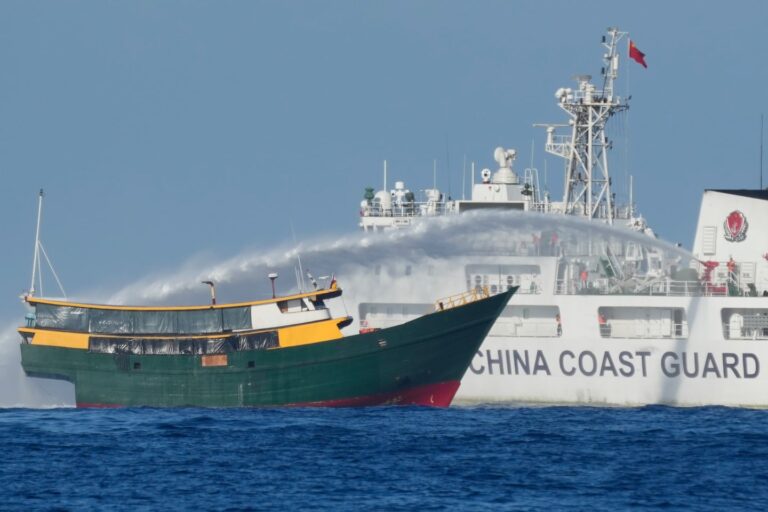The shallow waters off the northwestern Philippines have become the most dangerous flashpoint in a disputed area almost entirely claimed by China. Chinese naval and civilian vessels have surrounded Philippine marines aboard a stranded boat, tried to block supplies and demanded the Philippines withdraw.
The Chinese and Philippine delegations “affirmed their determination to ease tensions without prejudice to either side’s position,” the foreign ministry in Manila said in a statement late Tuesday. “Great progress has been made in formulating measures to manage the maritime situation, but significant differences remain.”
According to the Philippine side, Philippine Undersecretary of Foreign Affairs Teresa Lazaro told Chinese Vice Foreign Minister Chen Xiaodong that “the Philippines will make relentless efforts to safeguard its interests and uphold its sovereignty, sovereign rights and jurisdiction” in the South China Sea.
An agreement was signed to improve communications during emergencies at sea, and the two sides agreed to continue discussions on strengthening cooperation between their coast guards, though details were not disclosed. There was also a confidence-building plan to host an academic forum of scientists and scholars aimed at improving marine science cooperation.
Ahead of the talks, the Philippines plans to formally ask the Chinese delegation for the return of at least seven rifles seized by Chinese coast guard personnel during a June 17 clash in shallow waters and compensation, a Philippine official told The Associated Press on condition of anonymity because he was not authorized to publicly discuss the sensitive issue.
The Asian neighbors agreed to hold meetings known as the bicameral consultative mechanism, which first met in 2017, to peacefully manage the dispute. But the high seas standoff continues, especially under President Ferdinand Marcos Jr., who, unlike his predecessor, has strengthened military and defense ties with the United States as a counterweight to China.
Besides the Philippines and China, Vietnam, Malaysia, Taiwan and Brunei also have overlapping claims to the strategic area, which is home to rich fishing grounds and potentially larger gas reserves than several coastal nations have found so far, mostly in nearby waters.
There have been sporadic clashes in the past between Chinese troops and those of Vietnam, Malaysia and Indonesia, but Southeast Asian countries have resisted an aggressive confrontation with China, fearing it would destabilize important economic ties.
Under President Marcos, who took office in 2022, the Philippines launched a campaign to expose China’s aggressive behavior by releasing videos and photos and allowing journalists on board coast guard patrol boats that have been involved in dangerous confrontations with Beijing’s military.
The United States does not claim sovereignty over the disputed waters but has sent warships and fighter jets to patrol the area, saying it aims to ensure freedom of navigation and overflight and to reassure allies such as Japan and the Philippines, which are in a territorial dispute with China over islands in the East China Sea.
Following a clash last month at Second Thomas Shoal in which Chinese troops were caught on video wielding machetes, axes and improvised spears, Washington renewed its warning that it was obligated under a 1951 mutual defense treaty to help defend the Philippines if Philippine forces, including its coast guard, came under attack in the South China Sea or elsewhere.
Marcos said China’s actions would not trigger the treaty because no shots had been fired.

